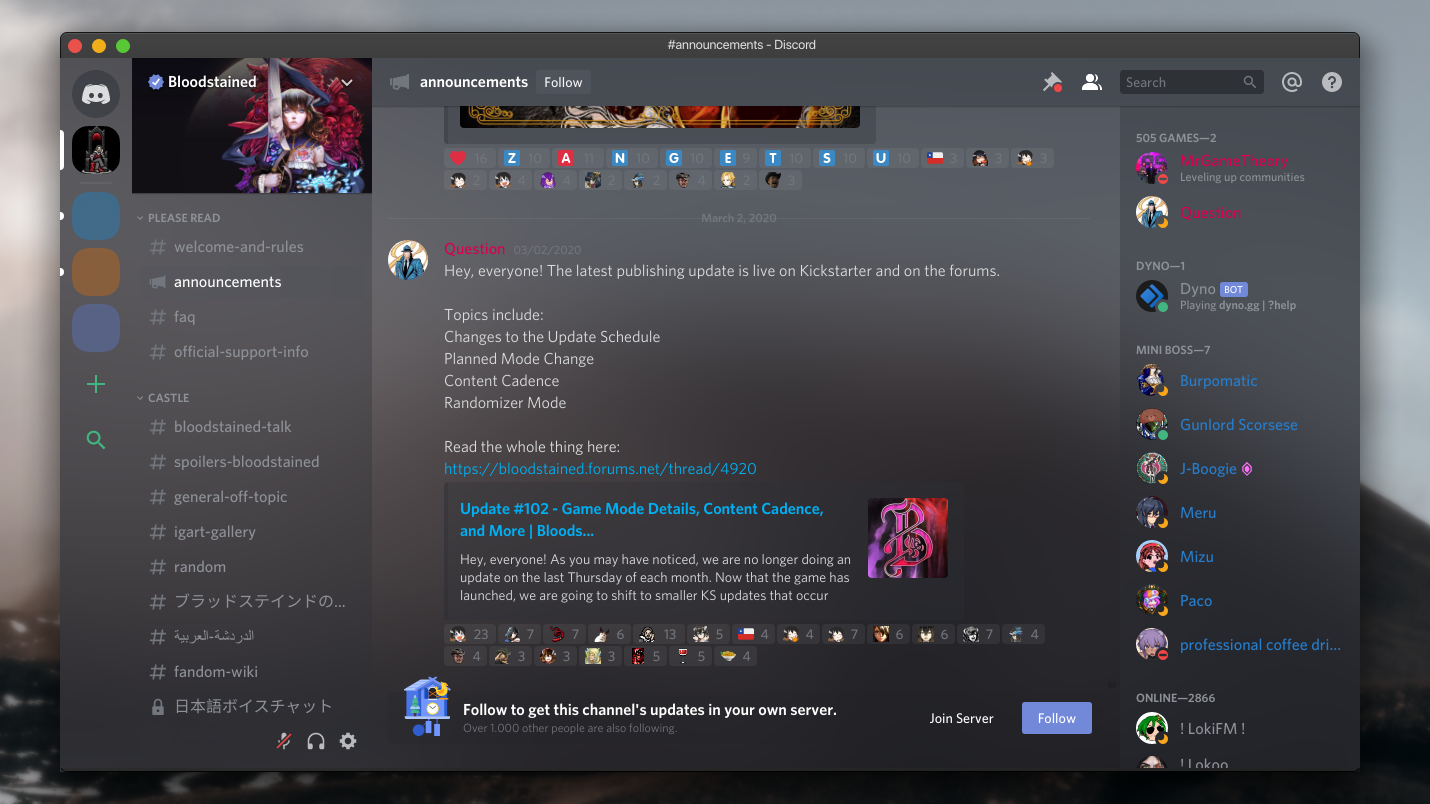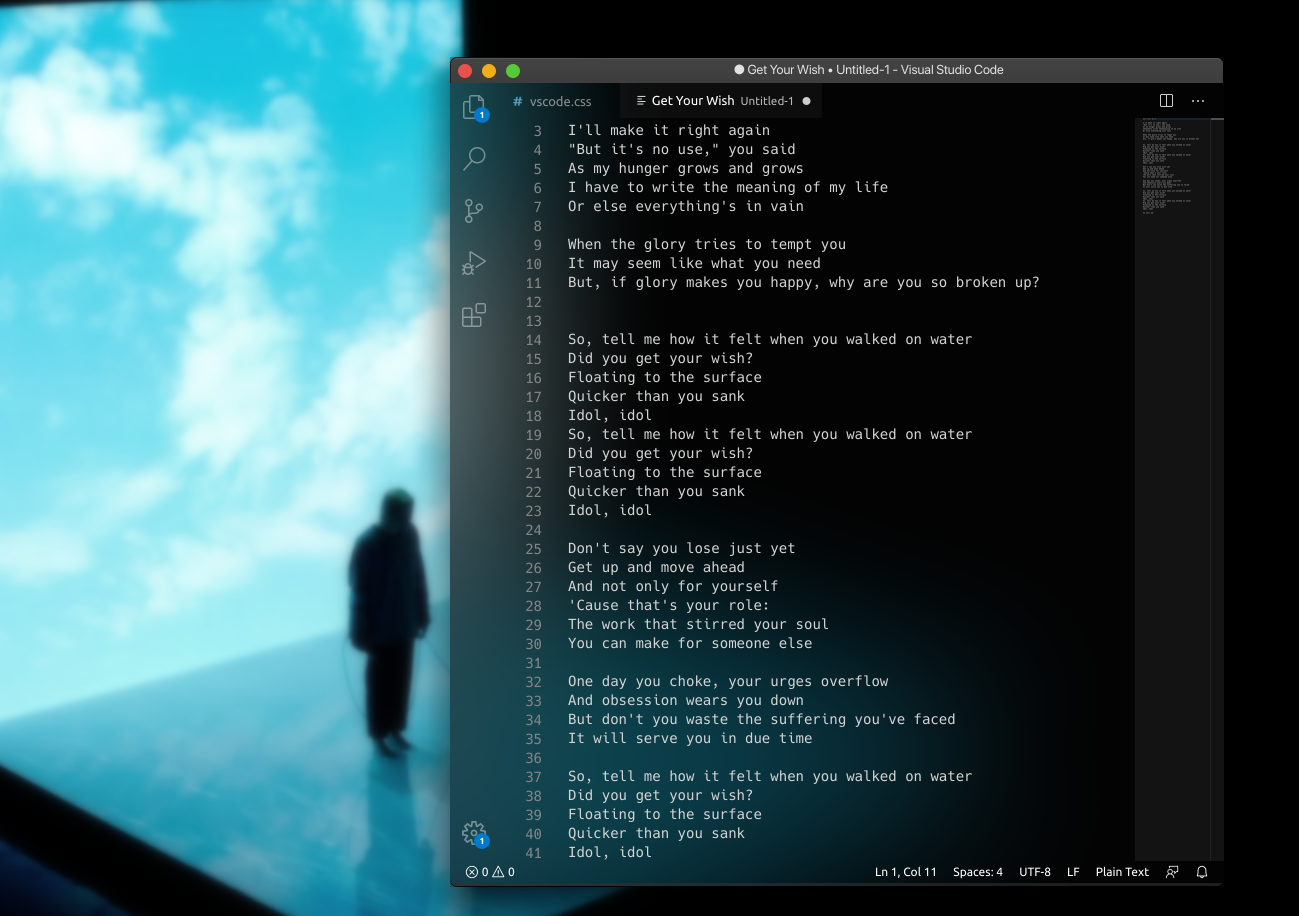Providing composition effects to Electron applications.
Chat with us on our Discord support server!
Glasscord is a really simple tool based on Glasstron that enables window composition effects (transparency and frosted glass effects) on Electron apps, such as Discord and Visual Studio Code; however it can work with almost any Electron app.
It is compatible with Windows, Linux and macOS.
More functionalities are achievable by extending Glasscord with modules. You can find more on the Glasscord-Modules repo.
Glasscord is NOT a theme. It's a tool that enables themes to request composition effects.
To put it in other, more simple words, you will need a theme that uses Glasscord's "CSS API" to be able to see it in action.
I was bored and I made an early proof of concept to post on r/unixporn. It seemed that a few people liked the idea, so I made that into an actual tool for themers.
TL;DR: Help me I have no purpose in this life anymore
Well, glad you asked!
- Look in the Releases section for the latest released version of Glasscord. Download the
glasscord.asarfile from there. - Locate your Electron app installation folder. We will assume it being the root directory from now on.
- Locate the
resourcesfolder. Inside it you'll likely have anapp.asarfile OR anappfolder.
-
Create an
appfolder. -
Now you need to get the
package.jsonfile from theapp.asarfile. The best and quickest way to extract it via theasarcommand line tool.If you don't have it, install it via
sudo npm install -g --engine-strict asar.Run this script where the
app.asarfile is:asar ef app.asar package.json -
Place your newly extracted
package.jsoninside theappfolder.
- Make a duplicate copy of the
package.jsonfile and name itpackage.original.json.
- Place your
glasscord.asarfile inside theappfolder. - Now, your target
package.jsonshould be extracted. Modify it so that itsmainproperty points to./glasscord.asar.{ [...] "main": "./glasscord.asar", [...] } - If everything was done correctly, the Electron app should start and Glasscord should be injected.
Glasscord's own CSS loader was forcefully disabled on Discord to avoid conflicts with other client mods.
You need a third party CSS loader to load Discord themes. You also need to install it FIRST, then install Glasscord AFTER you completed the other installation. This WILL BREAK the ability of the third party CSS loader to auto-update itself, so be warned!
Assuming you already installed everything correctly, you will need to load a custom CSS theme which supports Glasscord.
If you want to just try Glasscord on Discord, you can load the discord_example.theme.css (which is in
the extras folder of the repository for you to download).
If you're using a third-party CSS loader, please refer to your CSS loader's documentation to know how to load CSS stylesheets.
If you're using Glasscord's own CSS loader, you can configure it easily by editing the configuration files in:
- Windows:
%appdata%/glasscord; - Linux:
~/.config/glasscord; this may vary if you installed Glasscord on a Snap/Flatpak package. - macOS:
~/Library/Application Support/glasscord.
Try it for yourself and let us know!
Glasscord will look for some CSS properties defined in the :root CSS selector.
Please take a look at the discord_example.theme.css file to better understand how they are used.
Here's a straightforward CSS properties explaination. Let's go through them one by one; shall we?
Sets the blur type on Windows.
acrylicrefers to the strong blur used in Microsoft's Fluent Design. Note: it can be slow when dragging/resizing on some Windows versions.blurbehindis a weaker blur than the other one, and it kinda resembles the good old Aero Glass effect.transparentmeans no blur at all, so the window is just transparent..
accepts a value between those ones: titlebar, selection, menu, popover, sidebar, header, sheet, window, hud, fullscreen-ui, tooltip, content, under-window, under-page, none; defaults to none
Sets the vibrancy effects to be used with the Discord window.
If set to none, the vibrancy effect will not be applied but the window will be blurred anyway.
@Giovix92 did some testing for you guys, and he made this handy dandy chart to pick vibrancy effects
| Vibrancy mode | Slight description |
|---|---|
| fullscreen-ui, titlebar, menu, popover, sheet | Reference vibrancy, works in maximized and minimized windows |
| selection | Has kind of a bright tint to it |
| hud | The one with the most contrast and vibrancy |
| header | It won't work in fullscreen, and it's slightly darker |
| tooltip, sidebar | Darker than the reference vibrancy |
| under-window | The darkest of them all |
| under-page, window, content | Won't show any sign of blurring |
Tells the window compositor whether to blur behind windows or not.
Note: Check the Glasstron project to see which window servers/managers are compatible
Did you find a bug? File it in the issues section! Do you know how to fix stuff? Make a pull request! Or perhaps you want to send me a hug and a coffee? You can do so here!
Copyright 2020 AryToNeX
Licensed under the Apache License, Version 2.0 (the "License");
you may not use this file except in compliance with the License.
You may obtain a copy of the License at
http://www.apache.org/licenses/LICENSE-2.0
Unless required by applicable law or agreed to in writing, software
distributed under the License is distributed on an "AS IS" BASIS,
WITHOUT WARRANTIES OR CONDITIONS OF ANY KIND, either express or implied.
See the License for the specific language governing permissions and
limitations under the License.





